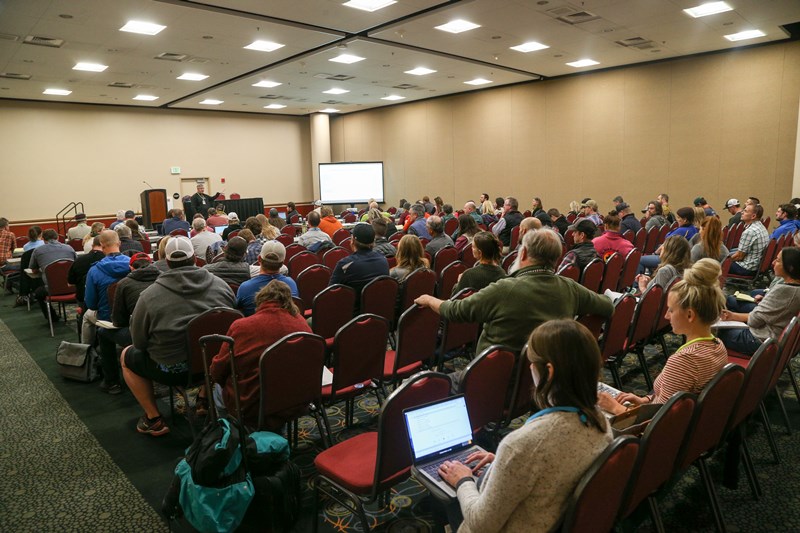By: Amanda Fox, Adventure Treks
Marketing was a prominent focus at the 2019 conference. Starting with a three-hour pre-conference Google Analytics workshop and wrapping up with a session on email automation, attendees took a deep dive into both online and offline strategies and how to make the most of their in-house and agency teams.

Google Analytics
If you aren’t already using Google Analytics to track visitors on your site, now is the time to start combing through the data to help shape your company’s strategy and success and actually measure ROI.
Takeaways:
-
Ensure that Google Tag Manager is set up within your Analytics; this way, you can collect much more data to use for tracking, monitoring form submissions, conducting surveys, re-marketing, clicks on certain links, downloads, items being removed from shopping carts, or tracking how people find and move through your website.
-
Stay away from mindlessly scrolling through Google Analytics—it’s too deep of a rabbit hole. Instead, decide what specific questions you have (why is my bounce rate going up? Why are my conversions going down? Why did my users decline?)—narrow it down to what problems you need to fix, and it will be much easier and quicker to figure out the answers.
-
Take the time to figure out a marketing budget and create specific business objectives and goals; this will allow you to use the data from Analytics more easily and determine whether your strategies are working, or whether it’s time to shift direction.
Customer journeys
As our world becomes infinitely more digital, our target audience’s journey online becomes even harder to track, thus making consumers harder to engage. How do we increase our chances of winning over consumers and building meaningful relationships? The key is to personally connect with them in the beginning of their search—in their “time of need.” Marketing funnels are no longer linear; we now need to understand how keywords live within our consumers’ search, and fulfill people’s needs every step of the way.
75 percent of smartphone users expect to receive immediate information when searching on mobile devices. Being in constant contact with our devices has reshaped the traditional consumer journey, and search needs have become driven by emotions, rather than by rational thinking.
The six emotional states as they relate to search include:
-
Surprise me: Search is fun, entertaining, and extensive.
-
Thrill me: Search is brief, using short keywords to find new information.
-
Impress me: Search becomes focused and specific, where consumers start to home in on certain brands.
-
Educate me: Consumers start quality control: reviews, testimonials, comparisons, etc.
-
Reassure me: Consumers reach out with questions, wanting reassurance they’re making the right decision.
-
Help me: Consumers have begun making decisions and want practical information and personal connections.
What does this mean for marketers?
Create content designed to respond to different consumer needs, from the planning stages of research to the later education stages (learning more about a brand). Widen your focus beyond the typical branded search keywords and think more about earlier research keywords might lead a consumer to your company. (You can test new keywords with ads leading to different landing pages.)

Video marketing
More than 90 percent of consumers discover brands or products on YouTube; more than half of consumers say videos have helped them determine which brand to buy; and more than 40 percent of consumers say they’ve purchased products they discovered on YouTube. Consumers watch videos to see a product before buying it, learning more about it and looking for credible reviews.
Big takeaway?
Video isn’t going anywhere, and brands should be utilizing YouTube (the world’s second-largest search engine behind Google) to showcase their products and experiences. But not only should you use organic video content to promote your brand; advertisers who use YouTube video ads (plus Google Ads) see a three percent higher conversion rate than those who only use Google Ads.
A few tips for creating both organic and paid video content:
-
Introduce your brand within the first five seconds.
-
Tightly frame your subjects to speak directly to the viewer.
-
Use memorable visual elements to grab attention and keep the viewer engaged.
-
Feature people with impactful stories who relate to your viewer and product.
Google My Business (GMB)
Google has significantly ramped up its GMB offerings. Not only can you include your typical business information (name, address, phone, website), but you can also add a more in-depth business description and relevant category. Keep in mind that your business info will show up on more sites than just Google (like Yelp, Yellow Pages, etc.), so ensure that your info is consistent.
How to optimize your GMB for SEO:
-
Write a compelling description of at least 250 words to grab and hold attention.
-
Add photos and videos frequently (businesses with photos see 35 percent more clicks) than those without).
-
Engage with consumers with posts, Q&As, reviews, and messaging.
-
Ask for reviews when doing phone and email follow-ups with recent clients, in email automation, on feedback cards, and on a reviews-specific page of your website. Always respond to reviews, whether good or bad.

Social media
Regardless of what combination of social sites (Facebook, Instagram, Twitter, LinkedIn) you’re using, social media is a necessary evil. Thankfully, Facebook has recently launched a few helpful (and free) tools for publishing and tracking your posts.
Facebook Analytics
Take a step back and view the big picture of your social media strategy with Facebook Analytics. You can track consumers’ progress through your Page to your website, measure retention, and learn how different demographics engage with your posts.
Facebook Insights
This is still a great on-page tool for looking at the micro level of your activity and engagement. Use Insights to figure out the best time of day and day of week to post, which type of content is most popular and garner the most engagement, check out the demographics and locations of your fans, how big your organic reach is, and much, much more.
Instagram Insights
Similarly, Instagram’s native Insights tool for business accounts provides a summary of activity in the last seven days, like how many followers you’ve gained and how many impressions and profile views. You can also dive deeper into gender, age range, locations and online times of your audience. This will allow you to see which posts (photos, carousel posts, or videos) are performing the best. You can even see where your impressions came from; i.e., whether fans found you through their feed, an Explore feed, location feed, or even hashtag feed.
Give us your feedback
Thank you to our excellent 2019 speakers! Please give us your feedback, and help us choose our 2020 speakers. Email AO.